Butterfly dwelling in heart, pink and black reflecting thousands years
- 2025-04-21
- AI IMAGES
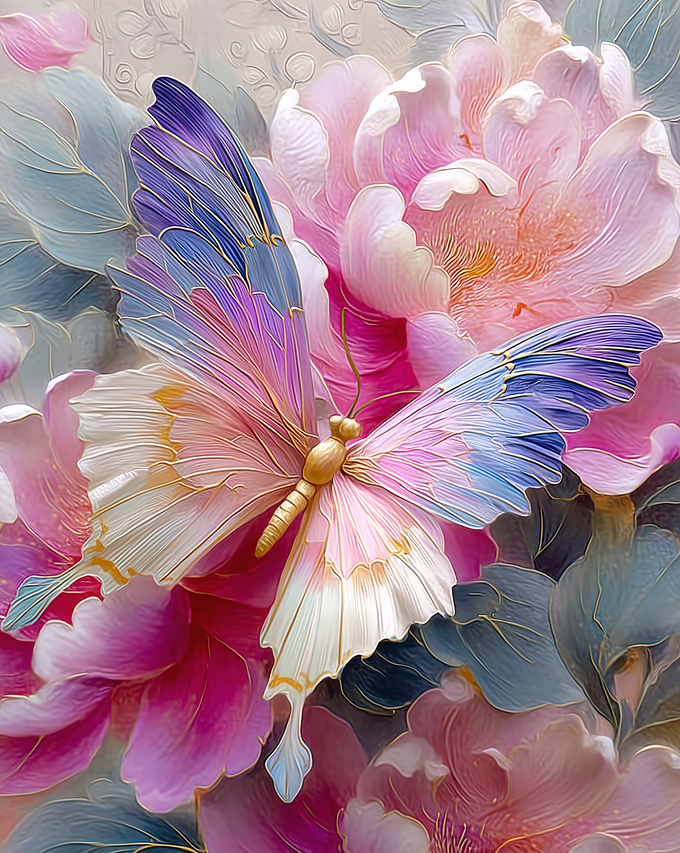
In March in Jiangnan, when the first ray of warm sunshine penetrates through the clouds, the buds of the pink peony quietly unfold. The silk petals wrapped in morning dew are like fragments of clouds soaked in moonlight, while the butterfly shadows shuttling between them are like elves swimming in the pink galaxy. This encounter that transcends time and space was originally an ancient love letter written by heaven and earth, and every flutter of its wings is retelling the eternal code of love among all things.

In the Northern Wei reliefs of the Longmen Grottoes in Luoyang, the petals of the pink peony falling from the clothes of the flying sky have already frozen the initial flight trajectory of the butterfly. Biologists have discovered that the linalool released by peonies perfectly matches the olfactory receptors in butterfly antennae. The resonance frequency of this chemical substance is like an aria in C major, making every flapping of wings a precise way to attend an appointment.
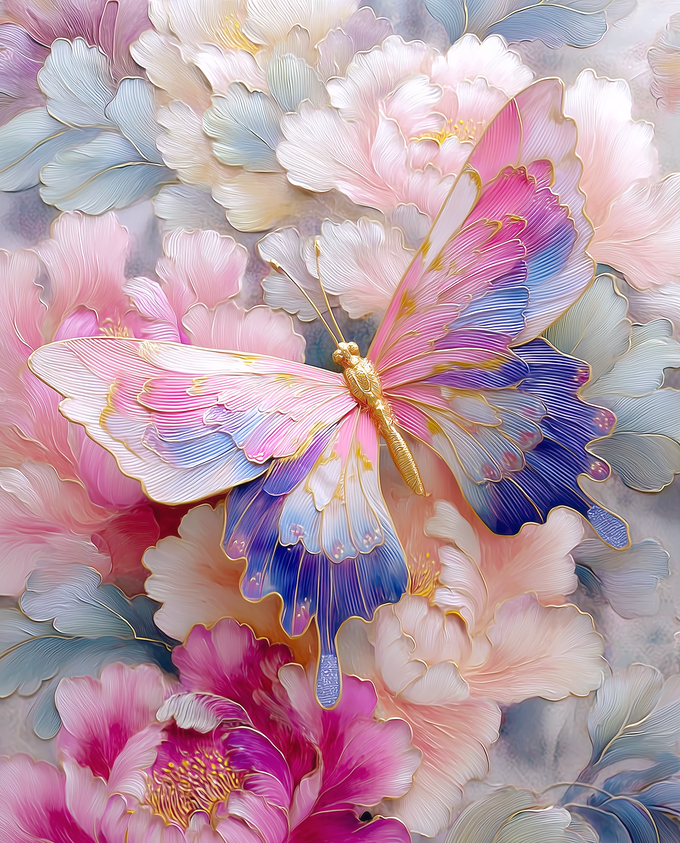
The Japanese haiku poet and Xie Wucun once captured such a moment: "Where the butterfly wings are stained with powder, it was the tears of the peony last night. When the butterfly inserts its mouthparts into the nectar gland of the flower center, the pollen stained with its feathers undergoes optical diffraction with the metallic luster of its wings, revealing the lost "rainbow and feather colors" in the "Han Xizai Night Banquet Picture" at a specific angle. This natural color magic made the Northern Song painting academies spend their entire lives chasing after silk and fabrics.

The butterfly that Zhuangzi dreamed of in the lacquer garden may have its wings stained with pollen from peonies. The Taoist concept of "objectification" is most ingeniously interpreted in this pair of living beings: the layers of unfolding when peonies bloom are like the life patterns of butterflies breaking their cocoons; And the elegant curve of butterfly wings when they fold, is also in line with the swirling posture of flowers when they wither.
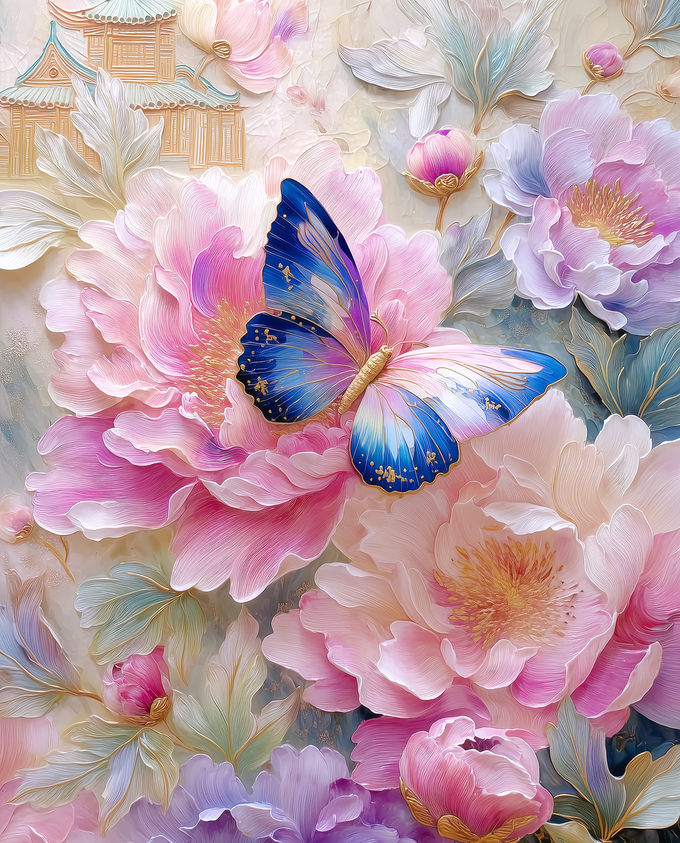
In the dry mountain and water garden of Xifang Temple in Kyoto, the pink peony simulated by moss and the butterfly shadow composed of gravel ripples form the deepest Zen court case. When the monk sweeping the bamboo broom along a specific trajectory, the stationary "butterflies" will suddenly flap their wings amidst the interplay of light and shadow, revealing the true meaning of the universe that "motion is stillness, stillness is motion".
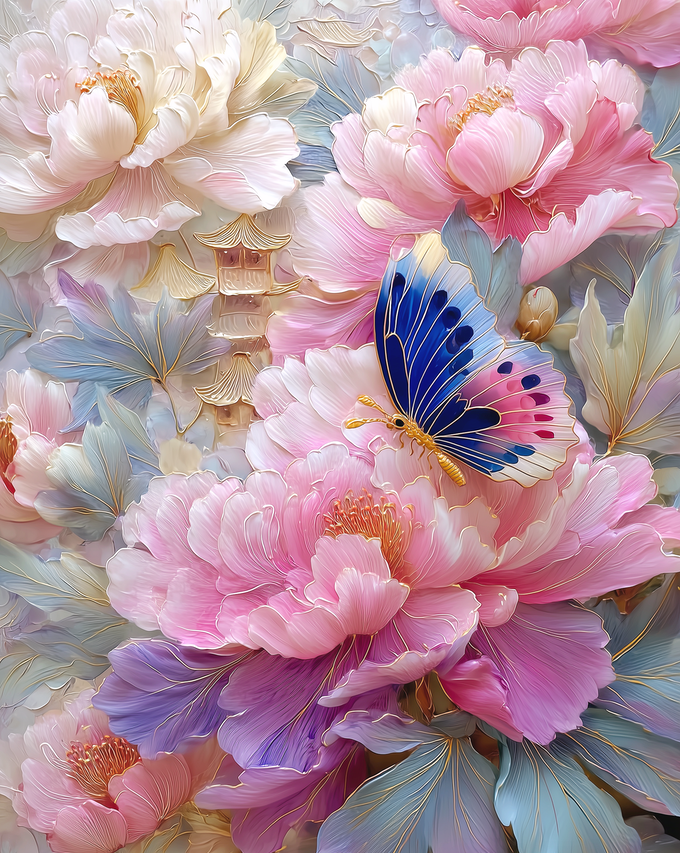
The enamel colored butterfly love flower plum vase from the Qianlong period of the Qing Dynasty was engraved with three thousand hidden patterns under the glaze using the "rolling and brocade ground" technique. Only when the noon sun shines at a 56 degree angle, will the pink peony on the bottle reflect the water sleeve dance of Du Liniang from "The Peony Pavilion" on the wall, while the butterfly group surrounding the flower shadow forms the unique symbol of Kunqu Gongchi Pu.
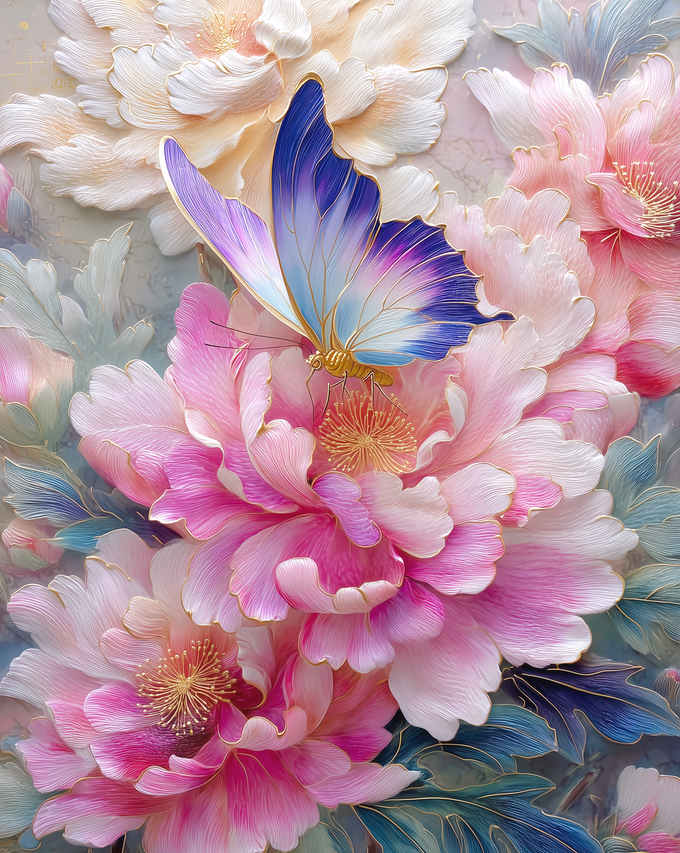
The gunpowder explosion work "Butterfly Transformation" by modern artist Cai Guoqiang uses the burning marks of powdered paint on rice paper to reproduce the overlapping time of peony flowering and butterfly emergence. The carbonized edges are like the broken silk in the painting "Ode to the Goddess of Luo", retelling the eternal aesthetic dialectics between destruction and rebirth.
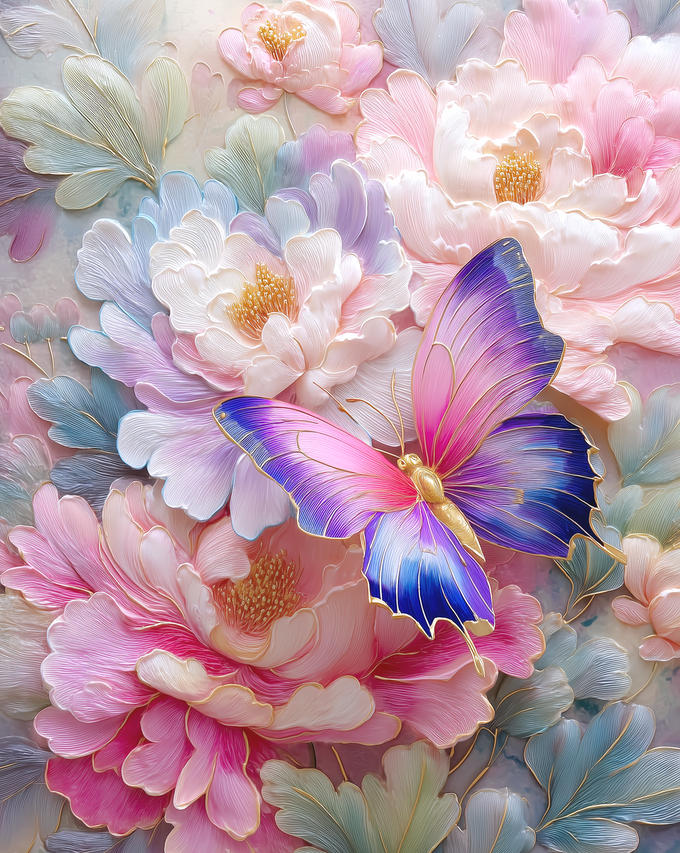
The holographic projection exhibition "Butterfly Dream" at Shanghai Chenshan Botanical Garden creates a quantum entanglement like interaction between virtual pink peonies and physical butterflies in AR glasses. At the moment when visitors reach out and touch the petals, a stream of sky blue data from the Northern Song Ru kiln will bloom in their palms, completing a millennium long color dialogue.